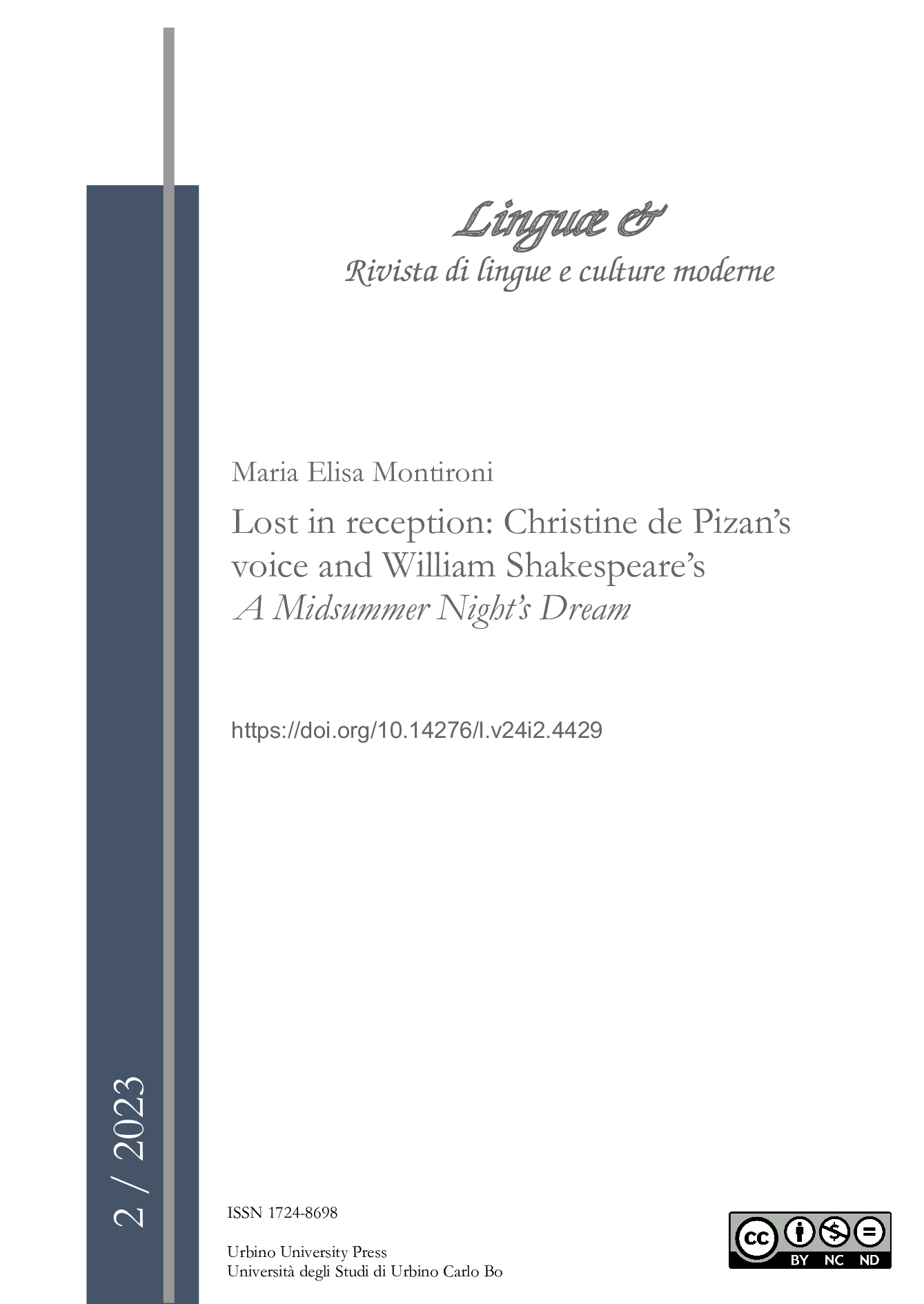Abstract
This paper considers Christine de Pizan’s works as an influential part of the early modern horizon of expectations and of its discursive intertextuality generating the interpretative frameworks within which to read the texts of Shakespeare and his contemporaries. After a brief overview of the existing research on the reception of de Pizan in England from her lifetime up to the 16th century, the role of de Pizan’s voice in intertextual and discursive interconnections is investigated with reference to William Shakespeare’s A Midsummer Night’s Dream. The pairs of characters Theseus and Hippolyta as well as Pyramus and Thisbe from Shakespeare’s text will be read in light of de Pizan’s oeuvre to suggest possible new insights into Shakespeare’s comedy and into Peter Quince’s play-within-the-play.

This work is licensed under a Creative Commons Attribution-NonCommercial-NoDerivatives 4.0 International License.

